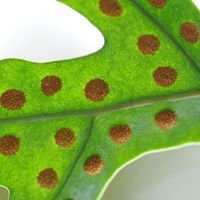Yao Zhi Hu
age ~88
from San Jose, CA
- Also known as:
-
- Yao Z Hu
- Yao Qi Hu
- Yao G Hu
- Yaozhi Te Hu
- Yaozhi Z Hu
- Yao Z Lin
- Yao Zhu
- Zhi Hu Yao
- Ghi Hu Yao
- Phone and address:
-
2576 Lady Palm Ct, San Jose, CA 95133
4082519519
Yao Hu Phones & Addresses
- 2576 Lady Palm Ct, San Jose, CA 95133 • 4082519519
- Fremont, CA
- Chapel Hill, NC
Us Patents
-
System For Controlling The Temperature Of A Reflective Substrate During Rapid Heating
view source -
US Patent:6359263, Mar 19, 2002
-
Filed:Sep 3, 1999
-
Appl. No.:09/390305
-
Inventors:Sing Pin Tay - Fremont CA
Yao Zhi Hu - San Jose CA
Randhir P. S. Thakur - San Jose CA
Arnon Gat - Palo Alto CA -
Assignee:Steag RTP Systems, Inc. - San Jose CA
-
International Classification:A21B 100
-
US Classification:219411, 219390, 219405, 118724, 392416
-
Abstract:A system and process is disclosed for rapidly heating semiconductor wafers coated with a highly reflective material on either the whole wafer or in a patterned area. The wafers are heated in a thermal processing chamber by a plurality of lamps. In order for the wafer coated with the highly reflective material to more rapidly increase in temperature with lower power intensity, a shield member is placed in between the wafer and the plurality of lamps. The shield member is made from a high emissivity material, such as ceramic, that increases in temperature when exposed to light energy. Once heated, the shield member then in turn heats the semiconductor wafer with higher uniformity. In one embodiment, the shield member can also be used to determine the temperature of the wafer as it is heated.
-
System For Controlling The Temperature Of A Reflective Substrate During Rapid Heating
view source -
US Patent:6403923, Jun 11, 2002
-
Filed:Aug 25, 2000
-
Appl. No.:09/648839
-
Inventors:Sing Pin Tay - Fremont CA
Yao Zhi Hu - San Jose CA
Randhir P. S. Thakur - San Jose CA
Arnon Gat - Palo Alto CA -
Assignee:Mattson Technology, Inc. - Fremont CA
-
International Classification:F27B 514
-
US Classification:219390, 219405, 219411, 118724, 118185, 118 501, 392416
-
Abstract:A system and process is disclosed for rapidly heating semiconductor wafers coated with a highly reflective material on either the whole wafer or in a patterned area. The wafers are heated in a thermal processing chamber by a plurality of lamps. In order for the wafer coated with the highly reflective material to more rapidly increase in temperature with lower power intensity, a shield member is placed in between the wafer and the plurality of lamps. The shield member is made from a high emissivity material, such as ceramic, that increases in temperature when exposed to light energy. Once heated, the shield member then in turn heats the semiconductor wafer with higher uniformity. In one embodiment, the shield member can also be used to determine the temperature of the wafer as it is heated.
-
Uv Pretreatment Process For Ultra-Thin Oxynitride Formation
view source -
US Patent:6451713, Sep 17, 2002
-
Filed:Apr 17, 2001
-
Appl. No.:09/836620
-
Inventors:Yao Zhi Hu - San Jose CA
Sagy Levy - Sunnyvale CA
Jeffrey Gelpey - Peabody MA -
Assignee:Mattson Technology, Inc. - Fremont CA
-
International Classification:H01L 2131
-
US Classification:438791, 438792, 438786, 438778, 438770, 438787
-
Abstract:The oxynitride or oxide layer formed on a semiconductor substrate is pre-treated with UV-excited gas (such as chlorine or nitrogen) to improve the layer surface condition and increase the density of nucleation sites for subsequent silicon nitride deposition. The pre-treatment is shown to reduce the root mean square surface roughness of thinner silicon nitride films (with physical thicknesses below 36 , or even below 20 that are deposited on the oxynitride layer by chemical vapor deposition (CVD).
-
Rapid Thermal Processing System For Integrated Circuits
view source -
US Patent:6600138, Jul 29, 2003
-
Filed:Apr 17, 2001
-
Appl. No.:09/836098
-
Inventors:Markus Hauf - Fremont CA
Yao Zhi Hu - San Jose CA -
Assignee:Mattson Technology, Inc. - Fremont CA
-
International Classification:F27B 514
-
US Classification:219411, 219390, 219405, 118724, 118725, 118 501, 392416
-
Abstract:In a rapid thermal processing system an array of heat lamps generate radiant heat for heating the surfaces of a semiconductor substrate, such as a semiconductor wafer, to a selected temperature or set of temperatures while held within an enclosed chamber. The heat lamps are surrounded individually or in groups by one or more optically transparent enclosures that isolate the heat lamps from the chamber environment and the wafer or wafers therein. The optically transparent enclosures may include associated reflectors and/or lenses to direct a higher proportion of emitted radiant heat energy from the lamps toward the semiconductor wafer(s). Thin planar quartz liners may also be interposed between the lamps and the substrate. By controlling radiant energy distribution within the chamber, and eliminating thick planar quartz windows commonly used to isolate the lamps in prior art RTP systems, higher processing rates and improved reliability are obtained.
-
Uv-Enhanced Oxy-Nitridation Of Semiconductor Substrates
view source -
US Patent:6706643, Mar 16, 2004
-
Filed:Jan 8, 2002
-
Appl. No.:10/041552
-
Inventors:Yao Zhi Hu - San Jose CA
-
Assignee:Mattson Technology, Inc. - Fremont CA
-
International Classification:H01L 2131
-
US Classification:438771, 438287, 438770
-
Abstract:The oxynitride or oxide layer is formed on a semiconductor substrate by subjecting the substrate to UV radiation while exposed to a gaseous atmosphere of O and one or more of N , N O, H and NH. Thereafter, a silicon nitride layer is formed according to known 4-step gate stack dielectric processing techniques. Alternatively, a 3-step gate stack process is used, namely following UV-oxidation, a further UV-radiation in NH may be applied, followed by a rapid thermal anneal process in an inert ambient. By using UV-oxidation as the first step in either a 4-step or 3-step gate stack process, very thin composite dielectric films with equivalent oxide thickness (EOT) below 16 and as low as 14. 2 can be obtained with significant improvement in leakage current density.
-
Rapid Thermal Processing System For Integrated Circuits
view source -
US Patent:6707011, Mar 16, 2004
-
Filed:Oct 16, 2002
-
Appl. No.:10/272462
-
Inventors:Yao Zhi Hu - San Jose CA
-
Assignee:Mattson Technology, Inc. - Fremont CA
-
International Classification:F27B 514
-
US Classification:219411, 219390, 219405, 392416, 392418, 118724, 118725, 118 501
-
Abstract:In a rapid thermal processing system an array of heat lamps generate radiant heat for heating the surfaces of a semiconductor substrate, such as a semiconductor wafer, to a selected temperature or set of temperatures while held within an enclosed chamber. The heat lamps are surrounded by one or more optically transparent enclosures that isolate the heat lamps from the chamber environment and the wafer or wafers therein. The optically transparent enclosures include associated reflectors to direct a higher proportion of emitted radiant heat energy from the lamps toward the semiconductor wafer(s). The lamps with such enclosures are mounted for rotation so that the reflectors may alternately shield all or a portion of emitted lamp radiation from the semiconductor substrate.
-
Peptides From The E2, E6, And E7 Proteins Of Human Papilloma Viruses 16 And 18 For Detecting And/Or Diagnosing Cervical And Other Human Papillomavirus Associated Cancers
view source -
US Patent:6933123, Aug 23, 2005
-
Filed:Jul 1, 2003
-
Appl. No.:10/612818
-
Inventors:Yao Xiong Hu - Mountain View CA, US
Mark J. Rosenfeld - Draper UT, US -
International Classification:G01N033/53
-
US Classification:435 71, 435 791, 435 6, 435 5, 435 794
-
Abstract:An isolated protein sequence or peptide from the E2, E6 or E7 early coding region of human papillomavirus (HPV) that is soluble in an aqueous medium, and characterized by a relative paucity of tryptophan, methionine and cysteine residues, and a relative abundance of glycine and asparagine residues. Also disclosed are isolated protein sequences or peptides from the E2, E6 or E7 early coding regions of HPV 16 and 18 and methodologies for detecting or diagnosing cancer or cellular abnormalities. Detection or diagnosis of Cancer or cellular abnormalities may include detecting or diagnosing pre-cancerous or pre-malignant conditions, cervical dysplasia, cervical carcinoma, koilocytosis, hyperkeratosis, intraepithelial lesions, and other cancers. A methodology for detecting or diagnosing cancer or cellular abnormalities comprises the steps of (1) reacting a sample of body fluid or tissue with isolated protein sequences or peptides; (2) forming an antibody-peptide complex; and (3) detecting the antibody-peptide complex.
-
Selective Reflectivity Process Chamber With Customized Wavelength Response And Method
view source -
US Patent:7115837, Oct 3, 2006
-
Filed:Jul 28, 2003
-
Appl. No.:10/629400
-
Inventors:Paul J. Timans - Mountain View CA, US
Daniel J. Devine - Los Gatos CA, US
Young Jai Lee - Sunnyvale CA, US
Yao Zhi Hu - San Jose CA, US
Peter C. Bordiga - Petaluma CA, US -
Assignee:Mattson Technology, Inc. - Fremont CA
-
International Classification:F27B 5/14
F26B 19/00 -
US Classification:219405, 219390, 219411, 2194431, 219543, 118724, 118725, 118 501, 118728, 392416, 392418
-
Abstract:A customizable chamber spectral response is described which can be used at least to tailor chamber performance for wafer heating, wafer cooling, temperature measurement, and stray light. In one aspect, a system is described for processing a treatment object having a given emission spectrum at a treatment object temperature which causes the treatment object to produce a treatment object radiated energy. The chamber responds in a first way to the heating arrangement radiated energy and in a second way to the treatment object radiated energy that is incident thereon. The chamber may respond in the first way by reflecting the majority of the heat source radiated energy and in the second way by absorbing the majority of the treatment object radiated energy. Different portions of the chamber may be treated with selectively reflectivity based on design considerations to achieve objectives with respect to a particular chamber performance parameter.
Name / Title
Company / Classification
Phones & Addresses
President
Dmax Vision Inc
848 Stewart Dr, Sunnyvale, CA 94085
Director
Compwise Distributor
Whol Computer Equipment
Whol Computer Equipment
1869 Otoole Ln, San Jose, CA 95131
4089431680
4089431680
Owner
Mei King Co
Professional Organization
Professional Organization
904 Grant Ave, San Francisco, CA 94108
Resumes

Yao Hu
view source
Yao Hu
view source
Research Associate At Stanford University
view sourceLocation:
San Francisco Bay Area
Industry:
Higher Education

Yao Hu
view source
Yao Hu
view sourceLocation:
United States
Youtube
Googleplus

Yao Hu

Yao Hu

Yao Hu

Yao Hu

Yao Hu

Yao Hu

Yao Hu

Yao Hu
Flickr

Yao Hu
view source
Yao Chung Hu
view source
Yao Hu
view source
Yao Hu
view source
Yao Hu
view source
Yao Hu
view source
Yi Yao Hu
view source
Yao Hu
view sourceOther Social Networks

Yao Hu Google+
view sourceNetwork:
GooglePlus
11 Aug 2011 Yao Hu - - Computer Engineer - Gemalto - Singapore - You can find me here www.cubcanfly.com, all fun stuff. Write to me [email protected].
Myspace
Get Report for Yao Zhi Hu from San Jose, CA, age ~88













